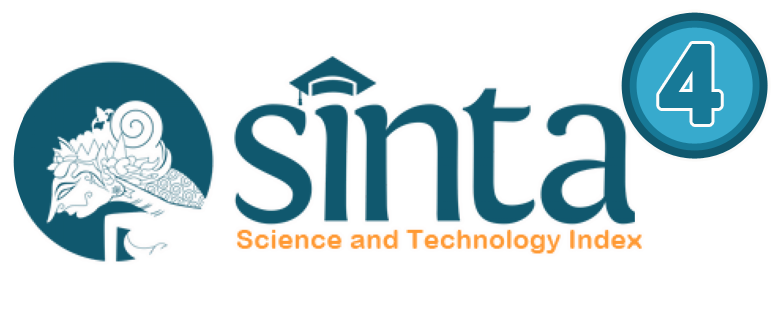Implementation of Policies on Law Enforcement in Money Laundering Cases in Indonesia and Denmark
Abstract
Money laundering is a serious crime, this crime can occur in several jurisdictions, so it can be said to be a transnational crime. Money laundering as one of the crimes committed by a group of people or more than one person. This form of money laundering is in the form of a criminal offense, while the original crime is often called a predicate offense. Some of the motivating reasons for committing money laundering crimes are that the money is used as capital as a business or sent to non-banking financial service providers such as insurance. The impact of money laundering will disrupt the national and international economy. In addition to these impacts, money laundering will result in disruption of the operational effectiveness of the economic system which will later lead to bad economic policies, especially in certain countries. Money laundering practices can also destabilize the national economy because money laundering causes sharp fluctuations in interest rates and exchange rates. The problem of money laundering will never run out even though the development of this case from year to year is increasing both in a number of state losses and its modus operandi. This study aims to see the implementation of policies on money laundering cases in Indonesia and will be compared with Denmark so that it can find out the implementation of each country's policies and what obstacles the Indonesian state faces in eradicating money laundering crimes. So the author is interested in giving the title of this study as Implementation of policies on law enforcement in money laundering cases in Indonesia and Denmark. The legal research used is qualitative research which is included in the category of normative research. The data used is secondary data.
Keywords
Full Text:
PDFReferences
Andry Triyanto Tjitra. (2023, February). 5 Biggest Money Laundering Crimes in Indonesia, INTRAC Suspect Reaches Rp 183.88 T. Tempo.Co. https://bisnis.tempo.co/read/1691688/5-tindak-pidana-pencucian-uang-terbesar-di-indonesia-ppatk-duga-capai-rp-18388-t
Ari Purwadi. (2012). Private Banking Services in Banking Institutions as Targets and Means of Money Laundering. Universitas Wijaya Kusuma Surabaya, XVII No. 1, 6.
Arifin, R., & Choirinnisa, S. A. (2019). Corporate Responsibility on Money Laundering Crimes on Indonesian Criminal Law Principle. Jurnal Mercatoria, 12(1), 43. https://doi.org/10.31289/mercatoria.v12i1.2349
Danske Bank Staff. (2023). Danish bank posts loss after US money laundering fine. The Local. https://www.thelocal.com/20230202/danish-bank-posts-loss-after-us-money-laundering-fine/
David Ramadhan. (2018). Law Enforcement Against Perpetrators in the Money Laundering Regime in Indonesia. University of Andalas.
FATF. (2019). Anti-money laundering and counter-terrorist financing in the Danish financial sector Report by Finance Denmark’s Anti-Money Laundering Task Force. November.
Ginting, Y. P. (2021). Combating Money Laundering with Follow the Money and Follow the Suspect Approach. Mulawarman Law Review, 6.
Iwan Kurniawan. (2013). The Development of Money Laundering and Its Impact on the Economic and Business Sectors. Jurnal Ilmu Hukum, 3 Nomor 1, 11.
Lestari Aprilia. (2021). Kebijakan Hukum Terhadap Pelaku Tindak Pidana Pencucian Uang. Universitas Medan Area.
Muh. Afdal Yanuar. (2019). Discourse between Positions of Money Laundering Offences as a Independent Crime and as a Follow Up Crime After The Decision of the Constituional Court Number 90/PUU-XIII/2015. Jurnal Konstitusi, Volume 16, 10. https://doi.org/DOI: https://doi.org/10.31078/jk164
Muladi and Bardad Nawawi Arief. (2015). Theories and Policies of Criminal Law. PT. Alumni.
Muladi and Diah Sulistyani RS. (2015). Corporate Criminal Liability. PT. Alumni.
Ogbeide, H., Thomson, M. E., Gonul, M. S., Pollock, A. C., Bhowmick, S., & Bello, A. U. (2023). The anti-money laundering risk assessment: A probabilistic approach. Journal of Business Research, 162(August 2022), 113820. https://doi.org/10.1016/j.jbusres.2023.113820
Reuters Staff. (2018). How Danske Bank’s Estonian money laundering scandal unfolded. REUTERS. https://www.reuters.com/article/us-danske-bank-moneylaundering-timeline/timeline-how-danske-banks-estonian-money-laundering-scandal-unfolded-idUSKCN1NO209
Shirlsy, S. (2011). Comparative Analysis of PPATK (Center for Financial Transaction Analysis Reporting) in Indonesia with FinCEN (Financial Crimes Enforcement Network) in the United States. University of Indonesia.
Sutan Remy Sjahdeini. (2016). History, Principles, and Theory of Bankruptcy Law: Understanding Law No. 37 of 2004 concerning Bankruptcy and Suspension of Debt Payment Obligations Second Edition. Prenadamedia Group.
Sutarno Bintoro, Sjamsiar Sjamsuddin, Ratih Nur Pratiwi, H. (2020). International cooperation to combat money laundering in the capital market: Indonesia and Australia experience. Journal of Investment Compliance.
Yoserwan. (2023). Corporate Criminal Liability In Tax Crime : An Effort To Optimize State Revenue From The Tax Sector. Jurnal Penelitian Hukum De Jure, 2022, 131–142.
Yunus Husein. (2017). PPATK: Tugas, Wewenang, dan Peranannya Dalam Memberantas Tindak Pidana Pencucuian Uang. Jurnal Hukum Bisnis, 6, 26.
DOI: https://doi.org/10.20961/hpe.v11i2.76533
Refbacks
- There are currently no refbacks.
Copyright (c) 2023 Altingia Magfirah

This work is licensed under a Creative Commons Attribution 4.0 International License.
Jurnal Hukum dan Pembangunan Ekonomi Online ISSN : 2777-0818
|









